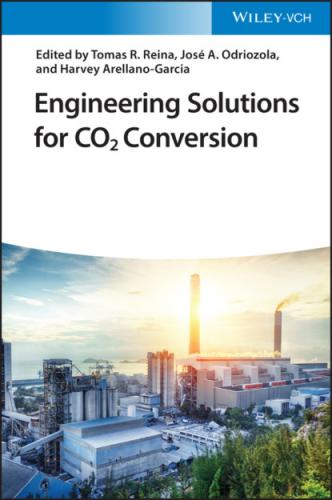(3.2)
Based on these previous explanations, membrane material is more related to diffusion coefficient, being more affected by the membrane changes, than solubility coefficient. In order to explain the concept in a more visual way, as an example, diffusion and solubility coefficients of four different gases in a group of several related polyimides are plotted against each other. Both coefficients are reasonably well grouped for each gas as it can be shown in Figure 3.2. Thus, for any gas, the difference in diffusion coefficient from the highest value is 100 times bigger than the lowest value, while the deviation in solubility coefficients is only 2–4 times. Changes in polymer chemistry affect both diffusion and solubility coefficients, but the effect on the diffusion coefficient is more meaningful [16]. Diffusion coefficient will differ depending on the polymer nature (rubber or glass). There is a considerable difference between the motion of polymer segments in a malleable rubbery polymer and in a stiff glassy polymer. Consequently, diffusion coefficients of glassy polymer are usually lower than the diffusion coefficients of rubbery polymers, and in addition, diffusion coefficients of glassy polymers decrease faster with increasing permeate molecular size. In other words, the mobility selectivity term for rubbery membranes is smaller than the mobility coefficient of glassy membranes.
Fractional free volume (FFV) parameter is used in order to correlate permeation properties with the structure and chemical properties of the polymers. Permeability factor of gases in glassy polymers are highly dependent on the FFV, which can be defined as the free space that is not occupied by the polymer molecules [18]. FFV is defined by
(3.3)
Figure 3.2 Diffusion and solubility coefficient for different polyimides.
Source: Adapted from Baker and Tanaka et al. [16, 17].
where v is the specific volume of the polymer (cm3 g−1), i.e. the correlative of the polymer density, and v0 is the volume occupied by the polymer molecules (cm3 g−1). In principle, FFV is the sum of all the spaces between the polymer chains.
Nowadays, polymer membranes for CO2 capture are being intensively investigated, specifically regarding post‐combustion carbon capture (CO2/N2), hydrogen purification (CO2/H2), and natural gas sweetening (CO2/CH4) [19]. In terms of post‐combustion carbon capture, competing with chemical absorption, gas separation membranes appear as a more environmentally friendly solution. As an example, a simulation of two potential polymer membranes, Polyactive® and PVAm/polyvinyl alcohol membranes, was performed for a 600 MW (gross) reference power plant [20]. Other materials, such Pebax, were also investigated for similar purposes, regarding CO2 capture in post‐combustion processes [21].
Regarding H2 purification, the predominant technology is steam methane reforming (SMR), where H2 is obtained together with, mainly, CO2 (15–20%) among other gases [22]. Polymeric membranes not only show advantageous properties, such as ease of processing or low cost, but also would be more accessible for large‐scale applications over other types of membranes. Consequently, and regarding high‐temperature processes, different polyimides such as 6FDA–6FpDA and Matrimid, with outstanding H2/CO2 separation properties at temperatures up to 270 °C, have been recently reported [23, 24].
With regard to natural gas sweetening, or in other words, CO2 removal from natural gas, membrane systems show greater potential than conventional chemical absorption because they have main advantages such as low cost, environmentally friendly technologies, and process flexibility [25]. Several commercial membranes are available for CO2 elimination from natural gas. The most common representative materials for CO2 removal are cellulose acetate/triacetate and polyimide [25].
In order to study the properties of different membrane materials, and to be able to compare different polymer materials, Robeson published several charts, the first time in 1991 and the latest in 2008, about membrane permeability as a function of selectivity. These charts are called upper bound correlation [26, 27]. These experimental data are obtained from single gas tests at 30 °C and 1 bar. This indicates that permeabilities were measured using pure gas tests, and selectivities were obtained from the ratio of the pure gas permeabilities. This gives ideal selectivities, despite the fact that industrial processes of gas separation membranes are commonly performed with gas mixtures. Nevertheless, it is possible to extrapolate to industrial applications, this is because, in principle, if gases do not interact with the membrane material, the difference between single gas selectivity and gas mixture selectivity will be small. Consequently, in gas mixtures, molecules that possess high‐solubility coefficients will be sorbed enough by the membrane material to affect the other gas permeabilities.
Hence, upper bound correlations are described for several gas pairs. Regarding CO2 separation, two different gas pair (CO2/N2 and CO2/CH4) are studied, CO2/CH4 being the second most investigated gas pair for membrane separation. In Figure 3.3a,b, a large number of polymers have been shown, which are mostly placed between a selectivity of 2–100 and a permeability of 0.1–1000. In addition, two black lines are identifying the prior upper bound and the present upper bound. Any polymer that surpasses the present upper bound can be considered as the most promising polymer for CO2 separation.
As an example, PIM‐1 with a permeability of 2300 Barrer and a selectivity of 18.4, or PIM‐7 with a permeability of 1100 Barrer and a selectivity of 17.7 [28], is considered as a ladder polymer for the gas pair CO2/CH4, which surpasses the upper bound [29]. Thermally rearranged polymers have been recently published, which exhibit outstanding improved separation characteristics, although the present upper bound is determined without these data [30], see Figure 3.3a.
Figure 3.3 Upper bound correlation for (a) CO2/CH4 separation and (b) CO2/N2 separation in 2008.
Source: Kim and Lee [28].
3.3 Oxygen Transport Membranes for CO2 Valorization
The application of strategies for capturing the CO2 from combustion processes is of great importance for effectively implementing CO2 conversion approaches and thus reducing the impact of industrial activity regarding CO2 emissions. Oxyfuel technology is one of the most considered options for conducting the implementation of this capture and sequestration of CO2 from exhaust
